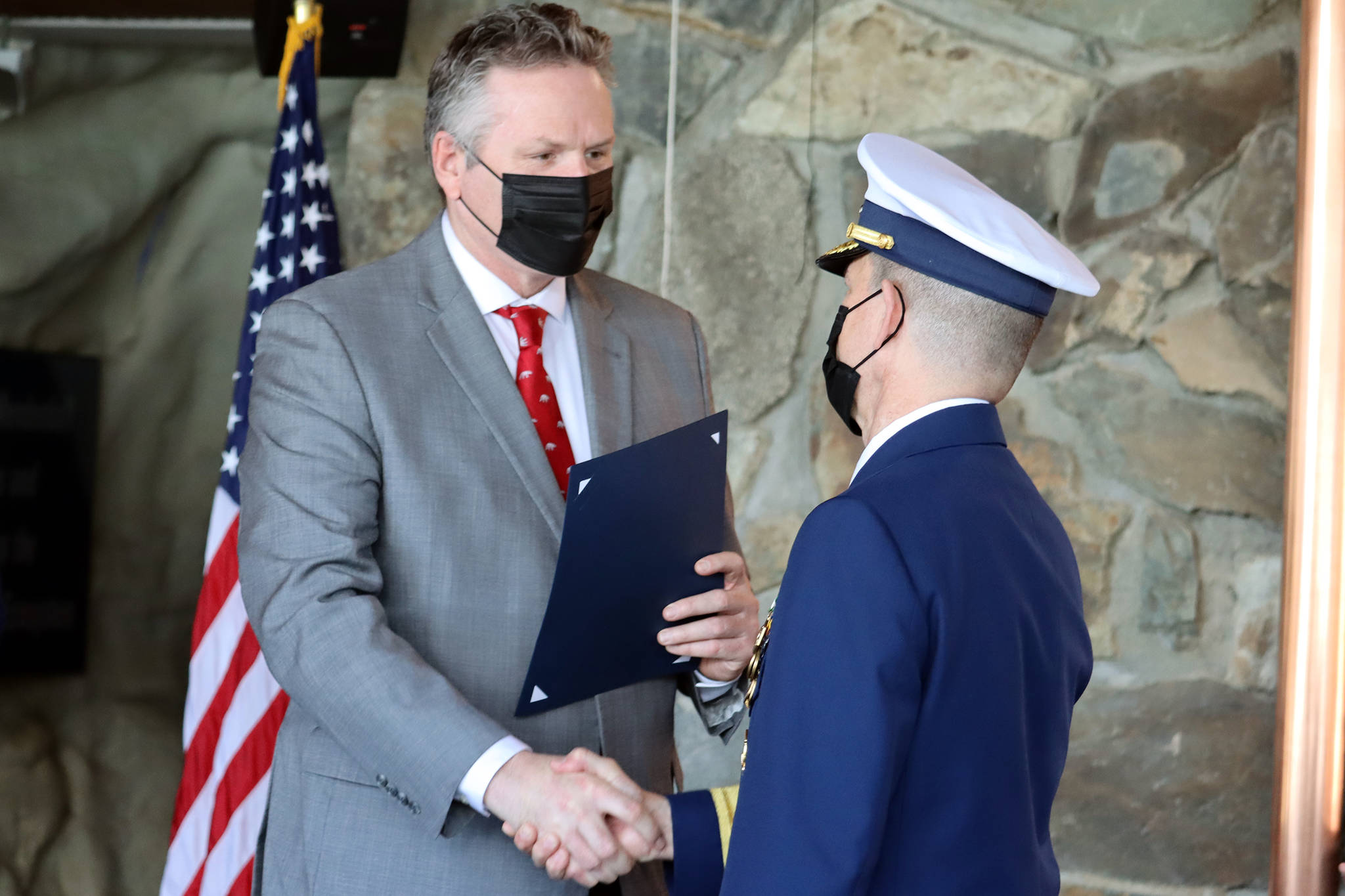By Mike Dunleavy
Alaska is on the global forefront of high seas traffic. Cargo ships, fishing vessels, cruise liners and military assets from other nations ply the waters of the Pacific and Arctic Oceans at a higher level than any other point in history. Russia has 40 icebreaking vessels in its fleet with more and larger nuclear ships planned. China is building a fleet of nuclear icebreakers with a vessel even larger than the Russians, and both countries are working together in the Arctic.
Their goals are simple: develop the Arctic military capability needed to control newly formed trade routes while claiming access to 22% of the world’s remaining hydrocarbons. This isn’t hyperbole; these are hard facts. Alaska, with more coastline than the rest of the United States combined, has much at stake with so many souls and volatile tonnage sailing the waters near our homes. Just this year, Russian LNG tankers traversed the Bering Strait for the first time in the dead of winter.
After meeting with U.S. Coast Guard leadership, it’s clear they recognize the strategic challenges and opportunities presented by these sea-based avenues of commerce. Polar Security cutters are expanding the country’s small icebreaker capacity. The previous Hamilton-class vessels of the national security cutter fleet have been replaced by the newer and more sophisticated Legend class. Our nation is rebuilding and expanding this essential tool in the Arsenal of Democracy.
An important next step in the decision-making process is choosing where to homeport the crews, support staff and families. Our Southeast communities have the means and the backbone to welcome and base these important components in our national security puzzle. We have ports of call with existing USCG bases and infrastructure, facilities that can accommodate deep-draft vessels, skilled technicians and shipyards to carry out repairs, good towns and villages for quarters and schools for their children. Already, Coasties are part of our communities, from Little League coaches to neighbors. In fact, Alaska has a nearly 200-year history with the Coast Guard.
But in making Alaska’s case to homeport some of these cutters and icebreakers, we need to take stock. The ports of Seattle, San Diego and their surrounding communities, are engaged in a spirited campaign to base these ships and personnel in their cities. Alaska needs to have a united front when presenting the Alaskan choice. That’s why I’m appealing to leaders of our coastal communities to submit formal comments to the USCG and request consideration as a homeport.
The Fairbanks community banded together when it made the case for basing the F-35 fighters in the Interior. I tip my hat to the residents of the Golden Heart City: An unprecedented, coordinated effort between civic leaders, educators and businesses brought Air Force assets to the front lines of the Arctic where they belong. Fairbanks also offered a blueprint for other regions to use when making their case to the national defense.
Sometime this fall, the USCG will issue its homeporting report for vessels. There isn’t a moment to lose. I ask the communities of coastal Alaska and others to band together and help put their best foot forward to get Coast Guard ships, crew, and families homeported here in the Last Frontier. It makes good sense for national security and will invigorate our local economies with hundreds of good-paying, year-round jobs.
The stakes are high, so let’s bring all hands on deck and get to work.
• Mike Dunleavy is the 12th governor of Alaska.Columns, My Turns and Letters to the Editor represent the view of the author, not the view of the Juneau Empire. Have something to say? Here’s how to submit a My Turn or letter.

